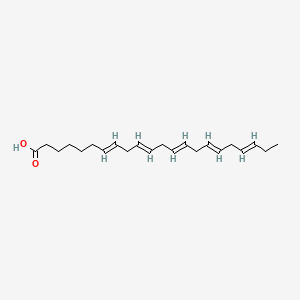| Igarashi M et al. |
Fifteen weeks of dietary n-3 polyunsaturated fatty acid deprivation increase turnover of n-6 docosapentaenoic acid in rat-brain phospholipids. |
2012 |
Biochim. Biophys. Acta |
pmid:22142872
|
| Chen J et al. |
DPA n-3, DPA n-6 and DHA improve lipoprotein profiles and aortic function in hamsters fed a high cholesterol diet. |
2012 |
Atherosclerosis |
pmid:22284366
|
| Norris PC and Dennis EA |
Omega-3 fatty acids cause dramatic changes in TLR4 and purinergic eicosanoid signaling. |
2012 |
Proc. Natl. Acad. Sci. U.S.A. |
pmid:22586114
|
| Waldron MK et al. |
Plasma phospholipid fatty acid and ex vivo neutrophil responses are differentially altered in dogs fed fish- and linseed-oil containing diets at the same n-6:n-3 fatty acid ratio. |
2012 |
Lipids |
pmid:22252853
|
| Harvey N et al. |
Does maternal long chain polyunsaturated fatty acid status in pregnancy influence the bone health of children? The Southampton Women's Survey. |
2012 |
Osteoporos Int |
pmid:22159749
|
| Mitchell DC et al. |
Quantifying the differential effects of DHA and DPA on the early events in visual signal transduction. |
2012 |
Chem. Phys. Lipids |
pmid:22405878
|
| Raatz SK et al. |
Total dietary fat and fatty acid content modifies plasma phospholipid fatty acids, desaturase activity indices, and urinary prostaglandin E in women. |
2012 |
Nutr Res |
pmid:22260857
|
| Wilk JB et al. |
Plasma and dietary omega-3 fatty acids, fish intake, and heart failure risk in the Physicians' Health Study. |
2012 |
Am. J. Clin. Nutr. |
pmid:22952185
|
| Reinders I et al. |
Association of serum n-3 polyunsaturated fatty acids with C-reactive protein in men. |
2012 |
Eur J Clin Nutr |
pmid:22113248
|
| Garneau V et al. |
Omega-3 fatty acids status in human subjects estimated using a food frequency questionnaire and plasma phospholipids levels. |
2012 |
Nutr J |
pmid:22775977
|
